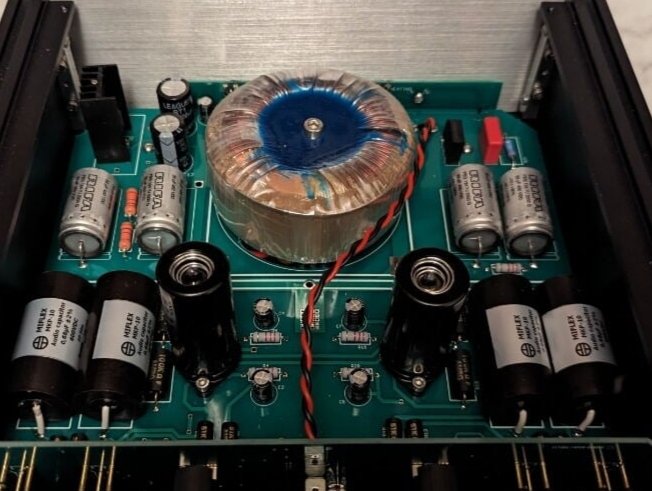Balanced cathode follower two output coupling caps per chanel, really good parts inthere( amrg rsistors ,milflex caps.)If you have monoblocks that becomes really inconvenient.
If you can drive long cables then you can place the preamp with the front end of the system in a location where airborne sound won't affect it as much.
So does its output use a transformer or a coupling capacitor?
Transformers (and autoformers) introduce distortion via hysteresis. This issue causes any tube amplifier using one at its output to have an elliptical load line. This causes the plate Voltage and current to be out of phase which increases distortion of the tube (in addition to that of the transformer itself). If there is a transformer (or autoformer) used to change signal level, it too has hysteresis and so will make distortion. This is unavoidable even if the transformer is properly loaded; its a function of transformer operation. All transformers have cutoff frequencies both low and high which introduce phase shift (which is why a resistive volume control is more transparent and wider bandwidth).
Coupling capacitors don't have the hysteresis problem, but they cause the output impedance of the circuit to vary with frequency as they will have a low frequency cutoff (which introduces phase shift; in the bass region the ear interprets this as a lack of impact despite the cutoff going lower than the ear does). At the output of a preamp, this will cause the 20Hz output impedance to be quite a bit higher than it is at 1kHz. This effects bass impact and varies with the load of the amplifier input impedance its driving. This is one reason amplifier input impedance in home audio is quite high, such as 100kOhms so to try to get around this issue.
One might think these issues are minor (perhaps only 'measurable') but IME they are quite audible. The additional transparency and bandwidth gained by direct-coupling at the output of a preamp isn't trivial.
They've increased the capacitors somewhat over the course of the model series, judging by the pictures. Power supply: B+ 280VDC. Possible operating point: ~ 150V, 7-10mA. I haven't measured it.
Exsample pic


